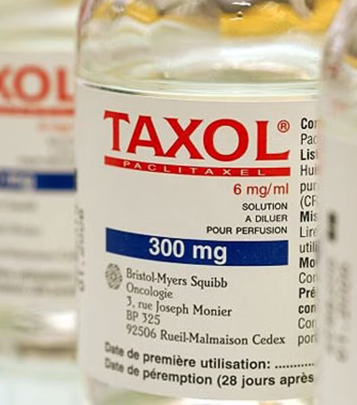The term “chemotherapy” was coined by german chemist Paul Ehrlich, who used this term to define the use of chemical compounds in the medical field.
In oncology, anti-neoplastic chemotherapy is defined as the use of chemical compounds to treat a tumor.
The era of chemotherapy began in the 1940s, and since then the development of anticancer drugs has seen several innovations up to the targeted therapies. The principles and the limits of chemotherapy that were discovered by early researchers are still valid today.
In this article we will review some of the major milestones in the history of chemotherapy and identify the challenges that are still open, for those who wish to explore further can read the full article.
There have always been challenges in medicine to improve human health, but few have achieved the importance that the treatment and cure of cancer has.
The process of tumor formation was already known, but not much was known about the biological mechanisms of tumor transformation and progression until the rise of molecular medicine.
The development of anticancer therapies, initially based on observations, became increasingly dependent on understanding the biology that characterizes different cancers.
- In May 1942, L. Goodman and A. Gilman, pharmacologists at the Yale School of Medicine, together with G. Lindskog treated a patient with a type of lymphoma with a particular class of cytotoxic compounds, azotiprites. The therapy led to a brief remission of the disease.
- In 1947 at Children’s Hospital Boston the first partial remission of a leukemia, a blood cancer, occurred through the use of a tumor cell growth inhibitory compound, aminopterin.
- After World War II S.Farber studied the effects of a specific class of compounds, folates, on patients with leukemia; these molecules appeared to stimulate cancer cell proliferation. Research activity then focused on anti-folate drugs, such as methotrexate, that induced brief remissions of the disease; these drugs could suppress the proliferation of malignant cells.
- In 1955 the National Cancer Chemotherapy Service Center (NCCSC) was established at the National Cancer Institute (NCI), a program to promote drug discovery to treat cancer.
- In 1956 C. Gordon Zubrod led the development of new drugs by focusing on natural products and established an extensive program to collect and test plant and marine sources. This led to the discovery of two new types of drugs: taxanes, of which Paclitaxel is one, and camptothecins.
- In the 1960s, experiments by F. Schabel and H. Skipper at the Southern Research Institute demonstrated both the effectiveness of combining drugs to prevent cancer cell resistance to treatments and that cancer therapy kills only a fraction of malignant cells.
- From 1978–1979, cisplatin, discovered in 1965 by B. Rosenberg, became an important drug in the treatment of testicular cancer. Subsequently, other researchers at the U.K. Institute of Cancer Research developed carboplatin, a cisplatin derivative with broad antitumor activity and minor toxicity.
- In the 1980s, attempts to broaden the discovery of cytotoxic compounds were proceeding concurrently, as well as molecular and genetic approaches to understanding novel altered cellular mechanisms in tumors that regulate various activities, such as proliferation.
- In the 1990s, the era of “targeted therapy” developed. The goal was to direct the effect of drugs to specific targets in cancer cells.
- In 1994, a new drug, Glivec, was created. In 1999, the FDA approved it to treat a type of blood cancer known as chronic myeloid leukemia (CML).
- 2000s, the focus shifted to the mechanisms that tumors put in place to survive, thus trying to cut off supply pathways.
- In 2003, both Gefitinib, an inhibitor drug, and Cetuximab, a monoclonal antibody used in combination with chemotherapy in the treatment of colon cancer, were approved by the FDA.
- In 2004, Bevacizumab, a molecularly targeted anti-angiogenic drug that works by blocking the formation of new blood vessels, is approved, thus cutting off the nourishment the tumor needs to grow. Bevacizumab is used in lung cancer, kidney cancer and ovarian cancer.
Technological innovations have increased success in the search for drugs inhibiting specific targets. Understanding the cellular mechanisms, which are altered in human cancers, is critical for effective use of anticancer drugs.
Future challenges will be to combine increasingly effective targeted drugs with cytotoxic drugs; selection of subgroups of patients which are more likely to respond to certain drugs, thus avoiding unnecessary costs and the toxicity of ineffective treatment, will be essential.



